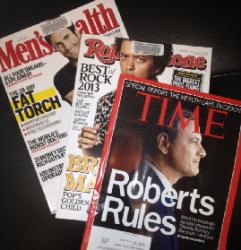Sierra software powers the J. Frank Marsh library automated catalog. The Marsh library is a member of the West Virginia Library Network, a consortium of 114 public and academic libraries across 37 counties. Academic dishonesty is morally unacceptable as well as destructive to the learning and teaching atmosphere. Academic dishonesty includes the giving or receiving of improper help on examinations or assignments, falsifying documents, and plagiarism (the act of stealing and using, as ones own, the ideas or the expression of the ideas of another). Such dishonesty can lead to a variety of penalties — including but not limited to failure of assignment, failure of course, loss of institutional privileges, or dismissal from the University. A failing course grade as a result of academic dishonesty will be recorded as an F on the final grade report, and the instructor will inform, in writing, the department chair and the Provost and Vice President for Academic Affairs who notifies, in writing, the Registrar’s Office and the student. Course grades affected by academic dishonesty are not subject to the D/F forgiveness rule described below, and a student who is to receive a failing grade due to proven academic dishonesty may not drop the failed course with a grade of W. (See Grade Change Procedure) Any recommendation by the instructor beyond an F in the course must be submitted, in writing, to the student, to the department chair, and to the Provost and Vice President for Academic Affairs for transmittal to the Judicial Steering Committee which will then initiate a judicial procedure. Any failing course grade or dismissal that results solely from academic dishonesty will be identified as such on the student transcript. The above is taken from the 2019-2020 Academic Catalog – Concord University The call number – the number placed on the spine of the book – is a code which provides valuable information about the book such as where in the collection it is located. The Library of Congress Classification System arranges materials by subjects. The first section of the call number represents the subject of the book. The letter-and-decimal section of the call number often represents the author’s last name while the last section of a call number is often the date of the material. Research projects often require primary and secondary sources. Primary sources are original documents or objects – the actual material or first-hand information. Primary sources can include historical and legal documents, statistical data, empirical studies and art objects. Secondary sources are things written about primary sources. These include interpretations, analysis and discussions about the original material. Secondary sources are second-hand information. Book reviews and articles in scholarly journals that evaluate another person’s original work or research are good examples.Catalog

Academic Dishonesty
Concord University Academic CatalogUnderstanding Call Numbers
What does the call number mean?
Call Numbers can appear:
On the spines of books
In the catalog

QA
273
R84
2010
Read call numbers by line:
Look at the example above
Read the first line in alphabetical order:
A,B,BF,C,D… L, LA, LB, LC, M, ML …QA
Read the second line as a whole number:
1,2,3,45,100,101,1000,2000,2430273
The third line is a combination of a letter and numbers.
Read the letter alphabetically.
Read the number as a decimal.
Some call numbers have more than one combination letter-number line.R84 is read as R.84 (notice the decimal)
The last line is often the date of publication
2010
Scholarly versus Popular Articles – What’s the difference?

Scholarly Articles

Popular Articles
Written For
Students, scholars & professionals
General public
Appearance
Mostly black & white, text, lengthy articles with bibliographies
Short articles with lots of advertising, color and no bibliographies
Content
Written for a specialized audience in terminology not easily understood to the general public. Researched articles
Articles on current events and timely topics written in easily understood language for the general public
Author(s)
Authored by specialists, academics and researchers; peer-reviewed
Written by freelance writers & staff; checked by editors
Examples
Science; Journal of Athletic Training; Journal of Latin American Studies
Time; Men’s Health; Rollingstone
Primary and Secondary Sources
Primary Source Examples
Secondary Source Examples
CatalogBayleigh Meadows2025-03-27T11:03:11-04:00
Catalog


